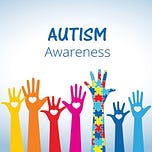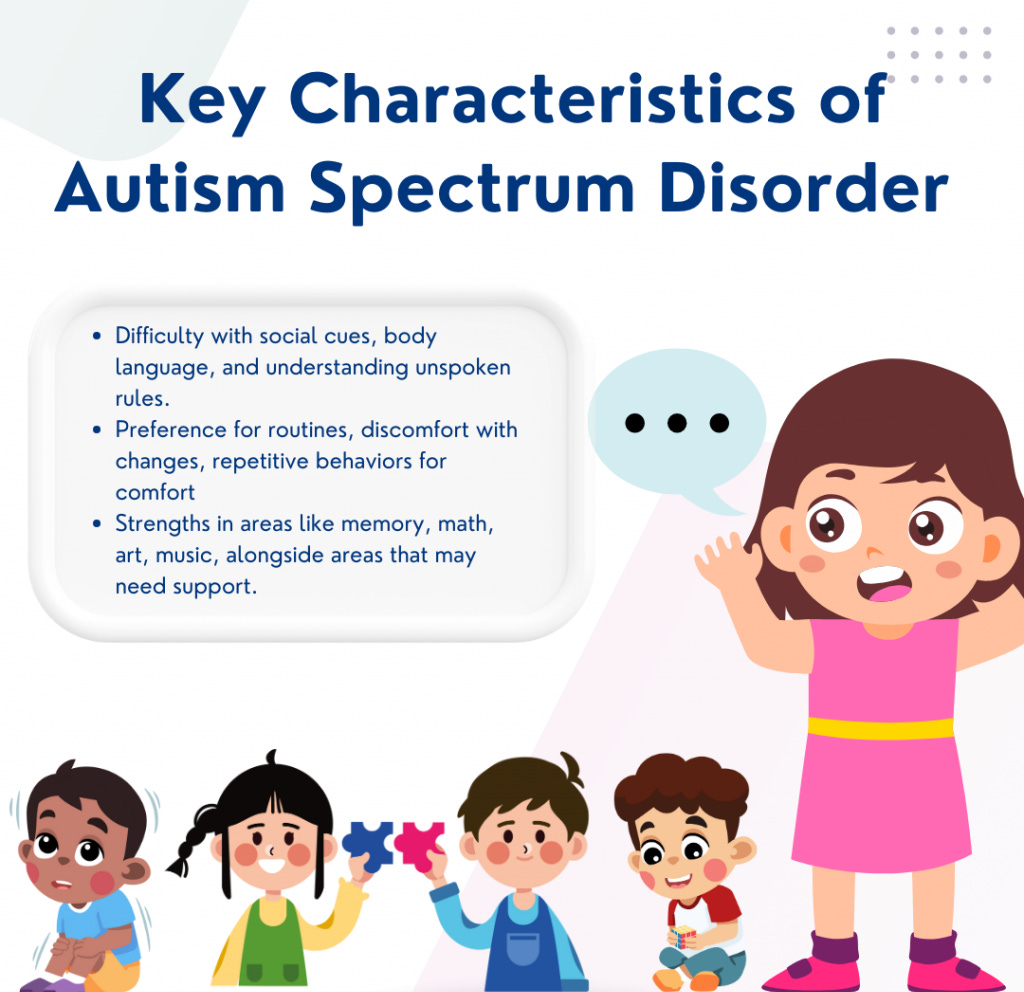Understanding the Rise of Autism: Science, Sensitivity, and the Urgent Search for Causes
Autism Spectrum Disorder (ASD) has emerged as one of the most significant public health concerns of the 21st century. In the early 1980s, autism was estimated to affect roughly 1 in 10,000 children. Today, that number stands closer to 1 in 36, according to the latest data from the Centers for Disease Control and Prevention. This sharp increase has sparked widespread concern among families, physicians, educators, and researchers.
The surge in prevalence cannot be attributed solely to changes in diagnostic criteria or increased awareness. While broader definitions and earlier detection have contributed to the numbers, they do not fully explain the exponential rise. The question remains: what is driving this dramatic increase?
For many parents of autistic children, the burden is heavy—not only emotionally and financially but spiritually. Families speak of regression in speech, loss of eye contact, repetitive behaviors, and the social isolation that often follows. The human cost is profound. Autism does not only affect the diagnosed individual; it reshapes the entire family structure.
Environmental factors are under increasing scrutiny. Scientific studies have examined a range of possibilities—prenatal exposures, heavy metals, agricultural pesticides, industrial pollutants, ultrasounds, and pharmaceutical compounds. Concerns have also been raised regarding the synergistic effects of multiple exposures over time. Though none of these have been conclusively proven as sole causes, the pattern points to a multifactorial origin, with genetics setting the stage and environmental triggers acting upon it.
Robert F. Kennedy Jr., founder of Children’s Health Defense and an independent voice in public health advocacy, has pledged to investigate the root causes of the autism epidemic. In his 2024 presidential campaign and subsequent public statements, he has called for a full-spectrum, transparent inquiry into potential environmental and pharmaceutical contributors to autism. He asserts that this investigation must take place this year, with no further delay, citing the rising numbers as a national emergency.
Kennedy’s proposal includes opening federal databases to independent scientists, lifting gag orders on researchers, and removing financial conflicts of interest from public health agencies. He has also called for rigorous safety testing of the childhood immunization schedule—a point that has drawn both strong support and sharp criticism. Regardless of where one stands on these questions, the fact remains that the causative mechanisms behind autism are not yet fully understood. The need for honest, unbiased science is paramount.
Globally, autism prevalence has increased as well, though the United States shows one of the sharpest rises. In Europe, Australia, and parts of Asia, similar patterns are emerging. The condition affects children across all racial, ethnic, and socioeconomic groups, though disparities in diagnosis and access to services persist.
There is growing recognition that the autism spectrum is broad and that outcomes vary widely. Some individuals lead full and independent lives, while others require lifelong care. Understanding this diversity is essential to any discussion of autism.
Parents and families affected by ASD continue to call for compassion, resources, and answers. They demand that scientific inquiry not be restrained by politics, ideology, or corporate influence. The future of countless children may depend on the courage to pursue that inquiry wherever it leads.
Science must remain faithful to its purpose: to seek truth. The numbers demand it. The families deserve it. The children require it.
The financial impact of autism is equally staggering. A study published in JAMA Pediatrics estimates that the lifetime cost of supporting an individual with autism and intellectual disability can exceed $2.4 million. For those without intellectual disability, the figure still approaches $1.4 million. These numbers account for medical care, behavioral therapies, lost income, special education services, and long-term support. Families often bear the brunt of these costs, navigating a fragmented care system while managing the daily realities of raising a neurologically vulnerable child.
Beyond the economic toll lies a deeper concern: the cultural shift toward normalization without inquiry. As awareness campaigns promote acceptance—a worthy goal—they sometimes neglect the need for investigation. The rise in autism cannot be dismissed as a mere artifact of broader definitions or improved detection. A diagnosis that was once rare has become routine, yet the scientific explanation remains incomplete. Avoiding inquiry in the name of sensitivity does a disservice to those most affected.
Research into environmental causes continues to yield unsettling patterns. Organophosphate pesticides, for example, have been linked in multiple studies to neurodevelopmental delays and disorders. Proximity to major agricultural zones has shown a correlation with increased autism diagnoses. Air pollution, particularly fine particulate matter (PM2.5), has also been associated with elevated risk, especially during key stages of fetal brain development. These findings are not conclusive, but they are consistent—and they demand further exploration.
Other potential contributors include endocrine-disrupting chemicals such as phthalates and bisphenol A (BPA), commonly found in plastics and household products. These compounds interfere with hormonal signaling, especially during prenatal development, when the brain is exquisitely sensitive to external influences. Emerging research has begun to map how even low-dose exposures can alter gene expression through epigenetic mechanisms.
Meanwhile, studies continue to explore the gut-brain axis—the biochemical signaling between the gastrointestinal tract and the nervous system. Many children with autism experience gastrointestinal issues, leading researchers to investigate whether microbiome imbalances play a role in symptom onset or severity. While the science remains in its early stages, this area holds promise for new forms of treatment that do not rely on psychotropic drugs.
Robert F. Kennedy Jr.’s insistence on independence in science resonates with many families who have long felt sidelined by the medical establishment. His proposed reforms—independent funding for autism research, elimination of regulatory capture, and transparency in scientific data—address systemic weaknesses that have hindered progress. Whether or not his views are universally accepted, the urgency he expresses reflects the growing alarm among parents and researchers alike.
The silence surrounding causation has become untenable. Families no longer accept vague assurances or pat explanations. They seek clarity, accountability, and direction. The explosion in autism rates over just a few decades cannot be brushed aside as a statistical fluke or a coincidence of modern life. It calls for something older than modern equivocation—clear-eyed inquiry, guided by reason and unafraid of what may be found.
The historical timeline underscores the urgency. Autism was first described in 1943 by Dr. Leo Kanner, who observed a handful of children with strikingly similar characteristics—withdrawal from human contact, resistance to change, and obsessive interests. These cases were vanishingly rare. For decades, autism remained a clinical curiosity. The spike in prevalence began in the late 1980s and accelerated through the 1990s and 2000s. This timeline coincides with multiple shifts: expansion of the childhood immunization schedule, increased use of ultrasound in pregnancy, rapid industrial chemical proliferation, and a growing reliance on processed foods. Each of these developments warrants scrutiny.
Genetic predisposition alone cannot explain such rapid change. Human genes do not mutate across populations within one or two generations. Environmental triggers, acting upon genetic vulnerabilities, are the more plausible mechanism. This is not theory; it is the foundation of modern toxicology and epigenetics. A child’s neurological development is a delicate process, influenced by thousands of variables—chemical, hormonal, nutritional, and emotional. Disturbances during critical periods may leave permanent imprints.
Despite this, mainstream research institutions have largely avoided certain lines of inquiry. Pharmaceutical influence in academia and regulatory bodies is well documented. Studies that challenge dominant narratives are often underfunded, marginalized, or dismissed outright. This institutional inertia slows progress and deepens public mistrust.
Parents who raise questions are too often labeled or ignored. Yet they are the primary witnesses to their children’s regression—the sudden loss of speech, the screaming at night, the vacant eyes that once held spark. Their observations, while anecdotal, are consistent across thousands of cases. They do not claim to have all the answers, but they demand that their experiences be taken seriously.
Kennedy’s platform, controversial to some, gives voice to this demand. He has proposed a full federal audit of all autism-related research funding, with an emphasis on independence from industry interests. He calls for a national database that tracks health outcomes longitudinally and transparently, free from political influence. He insists that science must follow the evidence, not the funding.
The challenge ahead is formidable. Autism is not a monolith. It presents differently in each individual and varies in severity. Some children experience sensory overload so intense that even daylight or the sound of a dishwasher becomes unbearable. Others struggle with basic speech and motor function. Many are nonverbal. Still others possess high intelligence and unusual talents, yet lack the social instincts necessary for daily life. A single cause is unlikely. But the search must not be abandoned because the answers are difficult.
Every day lost is another child undiagnosed, another parent isolated, another future altered. Time is not on our side. The questions are known. The tools are available. The silence must end.
Autism now touches nearly every classroom, every community, every extended family. The rise is not abstract—it is visible in playgrounds, clinics, churches, and homes across the nation. To ignore the causes is to accept this as the new normal without contest. That would be a grave failure of science, policy, and conscience.
The nation must reclaim the courage to investigate without fear, to question what has long gone unquestioned, and to protect its children not merely through slogans of awareness, but through the hard labor of truth-seeking. It is not enough to accommodate autism. We must understand it. We must ask what has changed in the world around our children—what they breathe, ingest, absorb—and who benefits from those changes.
Families deserve more than platitudes. They deserve answers. And if answers cannot come from those who profit from silence, then the search must belong to the people. Let the science be free. Let the evidence be followed. Let no vested interest stand between this generation and the knowledge it needs.
Nothing less than the future depends on it.
Sources
Autism Prevalence Data:
Centers for Disease Control and Prevention (CDC) reported that approximately 1 in 31 (3.2%) children aged 8 years have been identified with Autism Spectrum Disorder (ASD) according to estimates from the CDC's Autism and Developmental Disabilities Monitoring (ADDM) Network. (Data and Statistics on Autism Spectrum Disorder - CDC)
Lifetime Cost Estimates:
A study published in JAMA Pediatrics estimated the lifetime per capita incremental societal cost of autism to be $3.2 million, with lost productivity and adult care being the largest components of costs. (The Lifetime Distribution of the Incremental Societal Costs of Autism)
Robert F. Kennedy Jr.'s Initiatives:
Robert F. Kennedy Jr., as U.S. Secretary of Health and Human Services, plans to establish a national autism registry utilizing Americans’ private health data, aiming to support autism and chronic disease research. (Robert F. Kennedy Jr. to Launch National Autism Registry Using Americans' Private Health Records)
Environmental Factors:
Organophosphate Pesticides: Prenatal exposure to organophosphate pesticides has been linked with poorer neurodevelopment and behaviors related to ASD in previous studies.
Air Pollution: A study found that the risk of ASD increased by 64% with exposure to 10 micrograms of PM2.5 per cubic meter of air during early childhood.
Bisphenol A (BPA): Research suggests there is an association between BPA exposure and ASD. (Prenatal Organophosphate Pesticide Exposure and Traits Related ..., Air pollution linked with increased risk of autism in children, Bisphenol A Exposure in Children with Autism Spectrum Disorders)
Gut Microbiome Research:
Studies indicate that the gut microbiome has a strong association with ASD and should not be disregarded as a potential target for therapeutic interventions. (A robust microbiome signature for autism spectrum disorder across ...)
Critiques of RFK Jr.'s Approach:
Autistic individuals and experts have voiced alarm at RFK Jr.'s approach to autism, criticizing his initiatives and rhetoric. (Autistic people and experts voice alarm at RFK's 'terrible' approach to condition)
Historical Prevalence Data:
The CDC reported that autism prevalence increased from one in 150 in 2000 to one in 36 in 2020. (Prevalence and Early Identification of Autism Spectrum - CDC)
Additional Environmental Studies:
Air Pollution: Studies have shown that air pollution exposures during pregnancy are associated with an increased risk of ASD in children.
BPA and Phthalates: Research indicates that ASD and ADHD are clinically and metabolically different but share a reduction in the efficiency of detoxification for both BPA and DEHP. (Prenatal Exposure to Air Pollution and Autism Spectrum Disorder, Bisphenol-A and phthalate metabolism in children with ... - PubMed)
Further Gut Microbiome Insights:
The high prevalence of gastrointestinal disorders among ASD patients has prompted scientists to investigate the gut microbiota as a potential factor in ASD pathogenesis. (The Human Gut Microbiome as a Potential Factor in Autism ...)
These sources provide a comprehensive foundation for understanding the multifaceted aspects of autism's rising prevalence, associated costs, potential environmental factors, and ongoing debates surrounding research approaches and public health policies.
















Share this post